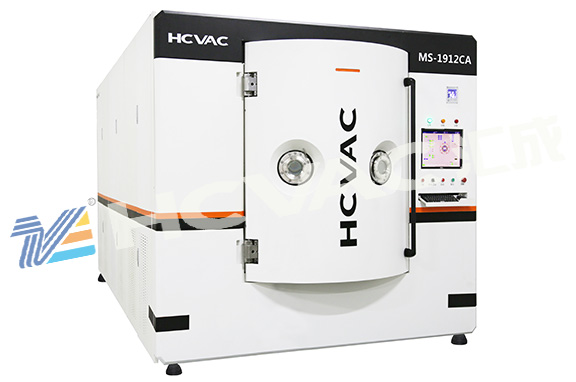Most of the items we come into contact with in daily life are coated with a thin layer of film through a pvd coating machine. Some of them are used for decoration, making the surface film layer more gorgeous and colorful, and some are to change the surface of product parts. performance, allowing it to meet the needs of daily use in specific environments, thereby changing the quality of our lives. Friends who are engaged in the vacuum coating industry know that there are several coating methods for pvd coating machines to coat workpieces. The coating method needs to be selected according to the characteristics of the product workpiece, as well as the effect to be achieved and the use environment. The required effects are different. Use The coating process is different. Vacuum evaporation, sputtering, ion plating (hollow cathode ion plating, hot cathode ion plating, arc ion plating, active reactive ion plating, radio frequency ion plating, DC discharge ion plating), here are some commonly used methods, I hope they can help Everyone:

1. Electron beam evaporation
Electron beam evaporation uses a focused electron beam to heat the evaporation source, causing it to evaporate and deposit on the surface of the substrate to form a thin film.
Features: Vacuum environment; the evaporation source material needs to be heated and melted; the base material is also at a higher temperature; a magnetic field is used to control the evaporated gas to control the thickness of the coating.
2. Sputter deposition
Sputtering is a thin film deposition technology associated with gas glow discharge. There are many sputtering methods, including DC sputtering, RF sputtering and reactive sputtering, etc. The most commonly used ones are magnetron sputtering, intermediate frequency sputtering, DC sputtering, RF sputtering and ion beam sputtering.
Features: The vacuum chamber is filled with inert gas (such as argon) required for discharge. Under the action of a high-voltage electric field, the gas molecules are ionized to produce a large number of positive ions. The charged ions are accelerated by a strong electric field, forming a high-energy ion flow that bombards the evaporation source material (called the target). Under ion bombardment, atoms of the evaporation source material will leave the solid surface, sputter onto the substrate at high speed and deposit into a thin film.
3. RF (radio frequency) sputtering
The frequency used by RF sputtering is about 13.56MHz. It does not require a hot cathode and can be sputtered at lower air pressure and lower voltage. RF sputtering can not only deposit metal films, but also insulating dielectric films of a variety of materials, so it can be used in a wide range of applications.
4. Arc ion plating
Cathodic arc technology uses low voltage and high current to ionize the target material into an ion state under vacuum conditions, thereby completing the deposition of thin film materials. This technology has a higher ionization rate and better thin film performance.
5. Filter cathode arc
Filtered cathodic arc (FCA) is equipped with a high-efficiency electromagnetic filtration system, which can filter out macroscopic large particles in the plasma generated by the arc source. Therefore, the prepared film is very dense, flat and smooth, has good corrosion resistance, and is integrated with the body. Very strong.
6. Ion beam
Ion beam processing is performed under vacuum conditions. An electron beam is first generated by an electron gun and then introduced into an ionization chamber that has been evacuated and filled with inert gas to ionize the low-pressure inert gas. The cations are extracted from the negative electrode and undergo steps such as acceleration and clustering to obtain ions with a certain speed and are projected onto the surface of the material, resulting in sputtering and injection effects. Since ions are positively charged and their mass is thousands or tens of thousands of times greater than electrons, the ion beam has greater impact kinetic energy than the electron beam and is processed by microscopic mechanical impact energy.
The above six are the most common daily coating methods of pvd coating machines. They are also the most commonly used coating processes. They also account for a large proportion in the market and are favored by various manufacturers in the market.



